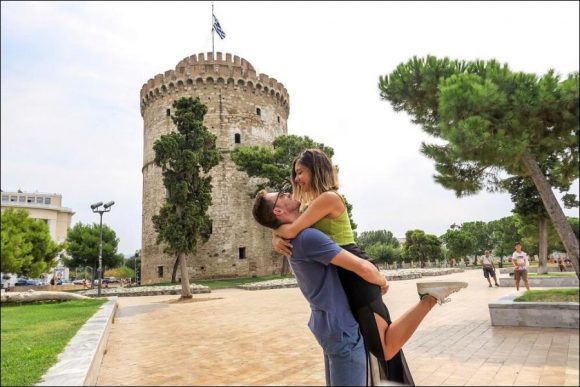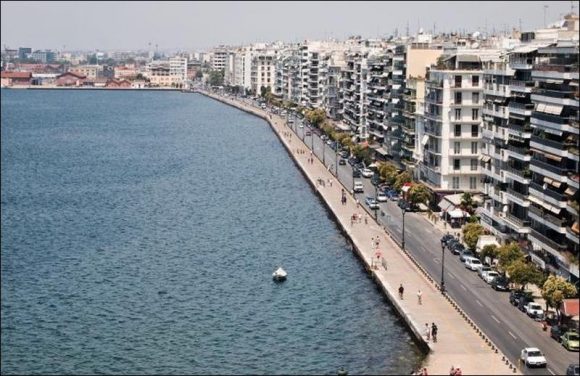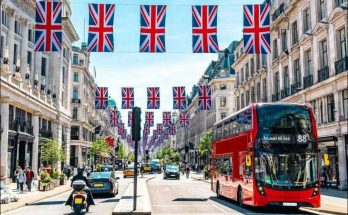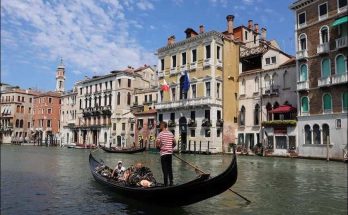Thessaloniki is one of the indispensable routes of overseas travel with its chirping squares, buildings that have survived from the depths of history and warm-blooded people. Thessaloniki, which is known as the most active city of Greece, has a lot of places to visit but most of them are within walking distance of each other.
If you visit the city on regular daily routes, three days will be enough. You can walk along the long coastline of this cheerful city and visit the historical buildings that will come across you in every corner of the city. If you want to feel more local, you will turn to Kamara Square and Ladadika District if you want to have fun. You can visit the Seven Towers Dungeons or Ano Poli to look out over the city. In short, you can find all the features expected from a journey from entertainment to shopping, history to nature.
Aristotelous Square
Aristotelous Square, the city’s main square, was designed by French architect Ernest Hebrard. Hebrard designed the square in 1917 in a new city planning that would prevent distorted urbanization in the aftermath of the fire disaster that nearly destroyed the entire city. The construction process started in 1918 and ended in the 1950s. Over time, many buildings in the square have been renovated. Especially in 2000, the buildings in the northern part were completely restored. The twelve buildings that make up Aristotelous Square have been on the list of buildings of the Republic of Greece since 1950.
The square has a rather imposing appearance. It is surrounded by streets and magnificent buildings on three sides and the west side opens to the sea. It is the most popular square in Thessaloniki. It has been used for rallies, festivals, events, exhibitions and various celebrations since it was built. Besides being a touristic point, there are many cafes, restaurants, bars, banks, business places and shops in the square due to being the center of the city. For this reason, tourists are also preferred by external locals.
Wherever you go, Aristotelous Square welcomes you with the energy of the crowd during the day and the lively entertainment at night. Various markets are established during the day, especially in the side streets crossing the square. In these markets, you can find a variety of foods from fish to vegetables, as well as from souvenirs to textiles. Kapani, located to the west of the square, and the Modiano market nearby are worth a visit. At night, there are still many taverns where you can spend time in the side streets. When the weather is good, entertainment is overflowing to the streets.
The White Tower
The White Tower in Thessaloniki is one of the symbols of the city. It is located on the famous coastline of Thessaloniki, at the junction of Victory Boulevard, Pavlou Mela and National Defense streets. The tower, II. Murad conquered Thessaloniki in 1430 and is said to have been built by the Ottomans in place of the Old Byzantine Tower. Some historians say that the design of the tower belongs to Sinan, the Ottoman Architect.
It was used for dungeons and various tortures in addition to defense purposes under Ottoman rule. Especially in 1826 II. The massacre Murat carried out in the tower against the janissaries caused the tower to become a torture nest. For this reason, it is also known as “Bloody Tower”. In 1912, when the city came back to the Greeks during the 1st Balkan Wars, the tower was painted white and symbolically tried to be purified from this bad reputation. Although the white paint in the tower disappeared over time, its name remained the same. After the restorations, the other structures around the tower were removed and the tower was left alone today. In 1998, Thessaloniki was awarded the White Tower and the European Federation of Cultural Heritage Organizations.
Today, the White Tower is used as a museum under the Greek Ministry of Culture. Alongside the changing exhibitions inside, it hosts a permanent exhibition dedicated to the history of Thessaloniki. It is also possible to watch the view of Thessaloniki integrated with the sea from the viewing terrace on the top floor of the tower.
The White Tower is a 10-minute walk from the city center to the coastline. The tower is open daily from 08.00 to 15.00 except Mondays. There is a certain entrance fee to enter the tower.
Agia Sofia Church
Agia Sofia Church is one of the oldest churches of the city, which will become familiar to many of us from the first moment we hear it. It is also the largest and most popular Byzantine church in Thessaloniki. It was built in the 8th century instead of a church that dates back to the 3rd century, based on the design of Hagia Sophia in Istanbul.
The city was converted into a catholic cathedral after the city passed under the rule of Venice during the Crusades in 1205 and in 1523 it became the central mosque of Muslims under Ottoman rule. When Thessaloniki returned to Greek rule in 1912, it was returned to Christians. It was restored in time as it was destroyed due to the big fire in 1917, like many other buildings in the city. However, there is no change between the original structure and the present state. The church was included in the UNESCO World Heritage Site in 1988.
The structure of the building is in the shape of a cross and reflects the architectural tradition of the Middle Byzantine period. Aiga Sofia’s dome represents Jesus’ ascension. The building’s magnificent exterior architecture, as well as the motifs, ornaments and mosaics from the different centuries, are very interesting. On the ground is a picture of Mary surrounded by angels.
The church is located at the intersection of the streets of Agia Sofia and Ermou. Aristotelous Square is a 10-minute walk away. In addition, Agia Sophia Square, one of the most famous squares in Thessaloniki, is located very close to the northwest of the church. After visiting the church you can have a pleasant time in this area
You do not have to pay any entrance fees to the church. It is open to visitors every day between 08.30-14.00 & 17.30-20.00. If you are going to visit in summer, you should pay more attention to your clothes. it is forbidden to enter in low-cut clothes showing the contours of the body.
Visits: 126




